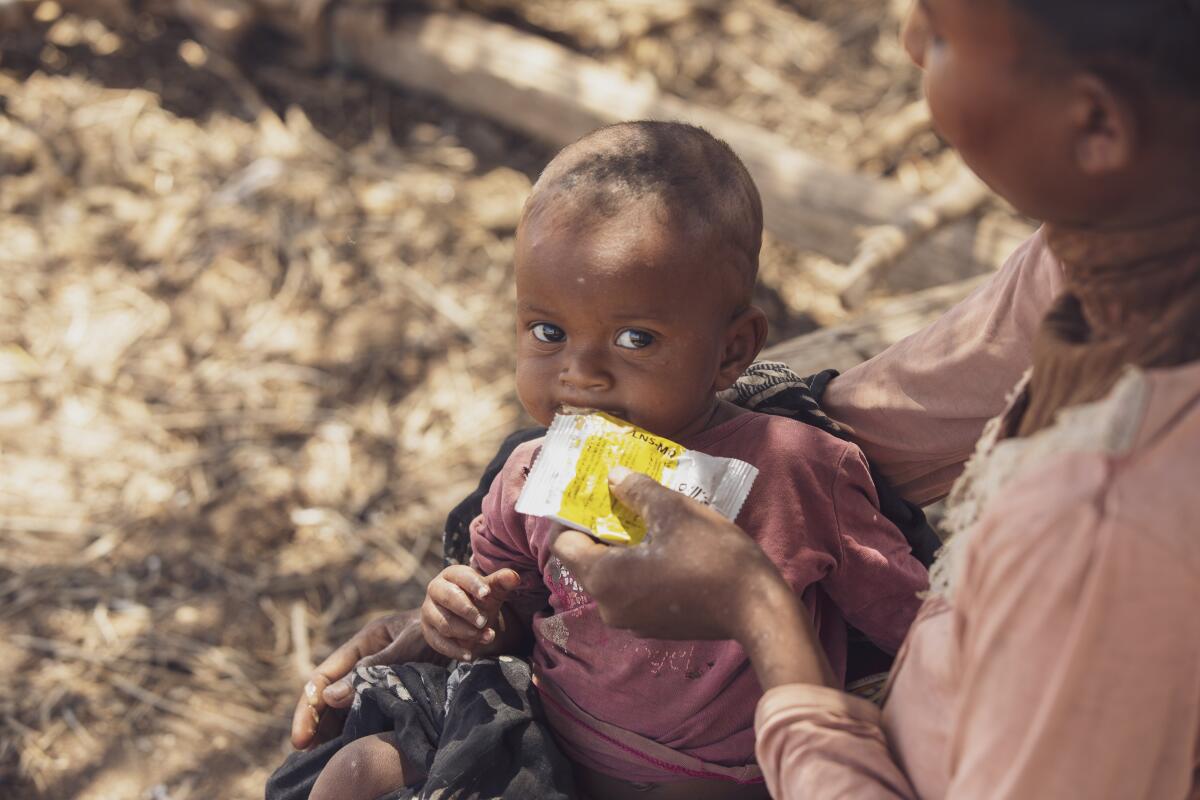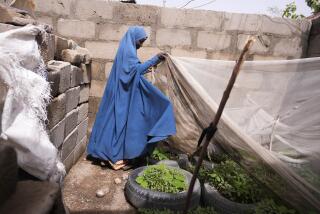âHeartbreakingâ Madagascar is âwake-up callâ in climate crisis, U.N. official says

ROME â The drought-stricken island nation of Madagascar is a âwake-up callâ for what the world can expect in coming years due to climate change, the head of the United Nationsâ food aid agency said Tuesday.
David Beasley, executive director of the World Food Program, told the Associated Press in an interview that whatâs happening in the south of the Indian Ocean country is âthe beginning of what we can expectâ to see as the effects of global warming become more pronounced.
âMadagascar was heartbreaking,â Beasley said, referring to his recent visit there. âItâs just desperate,â with people reduced to selling their household pots and pans to try to buy food, he said.
Some 38 million people worldwide were displaced last year âstrictly because of climate shocks, climate change,â leaving them vulnerable to hunger, according to Beasley. A worst-case scenario could see that number soar almost sixfold by 2050.
Thatâs the year many industrialized nations â excluding China, Russia and India â have set as their target for achieving carbon neutrality, meaning reducing greenhouse gas emissions to the point where they can be absorbed and in effect not add to the imbalance in the atmosphere.
When Beasley, a former South Carolina governor, took the World Food Program helm in 2017, the top reason for people being on the brink of starvation was man-made conflict, followed by climate change, he said.
But since then, climate change has been eclipsing conflicts as the bigger driver in displacing people and leaving them not knowing where their next meal will come from.
âI would like to think this is the worst-case scenario â 216 million people by 2050 that will be migrating or displaced because of climate change,â he said.
According to updated agency figures released Tuesday, nearly 30,000 people on Madagascar will be one step away from famine by the end of the year, and about 1.1 million already suffer from severe hunger. The island is struggling with exceptionally warm temperatures, drought and sandstorms.
Crops have wilted and harvests are scarce. People have taken to eating cactus leaves, which usually are cattle fodder, the U.N. food agency said.
âMadagascar is not an isolated incident,â Beasley said. âThe world needs to look to Madagascar to see what is coming your way and [to] many other countries around the world.â
He pointed out that Madagascar, a country of about 28 million people, accounts for only the tiniest fraction of greenhouse gas emissions in global terms.
âWhat did they do to contribute to climate change?â he asked rhetorically.
The World Food Program has been supplying about 700,000 people on the island with food and supplemental nutritional products for pregnant and nursing women and children.
In Ethiopia, by contrast, famine is man-made, caused by conflict.
The World Food Program estimates that 5.2 million people are in need of of emergency food assistance in Tigray, Ethiopiaâs embattled northern region. U.N. officials have warned in recent weeks that more than 400,000 people could face starvation and death if humanitarian aid isnât delivered quickly, but hardly any aid can get to those who desperately need it.
The Tigray forces say they are pressuring Ethiopiaâs government to lift a months-long blockade on their region of around 6 million people, where basic services have been cut off and humanitarian food and medical aid denied.
Beasley says his agency has been âmessaging to all sides, including the Ethiopian government, the leadership, that this is a crisisâ needing immediate access for food aid. But âweâre not making headway,â he said.
âWeâre not able to get [food aid] trucks in or get fuel in. Weâre not even able to get the cash to the people we need to pay,â Beasley told the AP.
As a result, Tigrayâs people âhave to be dying at unprecedented numbers, but we canât get the access we need,â he said. âItâs a disgrace.â
He said the WFP should be moving in 30 trucks a day loaded with food, and another 70 full of medicine and other humanitarian assistance. âWeâre not even getting 10% of that,â he said.
For many of Tigrayâs people, Beasley said, it has come down to âeither die or migrate.â
By contrast, Afghanistanâs new Taliban rulers have allowed the agency access to food distribution centers and schools where many teachers are going unpaid, and protected WFP warehouses, but international donors havenât been supplying sufficient funding, Beasley said.
âYou run into the issue of donors [who] do not want to be seen in any way as aiding or abetting or supporting the Taliban,â he said.
In Afghanistan, 22.8 million people â more than half of the population â face acute food insecurity, or are âmarching toward starvation,â as Beasley put it.
Conflict and drought combined to create that impoverished nationâs food crisis.
The dire situation will grow even more critical starting in January, when the WFPâs food stocks for Afghanistan will run low, if more donors donât come through.
âThat price tag is $230 million a month feeding themâ at only partial rations, Beasley said, adding âthere are 8.7 million people in Afghanistan knocking on famineâs door.â
The U.N. agency was awarded the Nobel Peace Prize last year.
More to Read
Sign up for Essential California
The most important California stories and recommendations in your inbox every morning.
You may occasionally receive promotional content from the Los Angeles Times.










